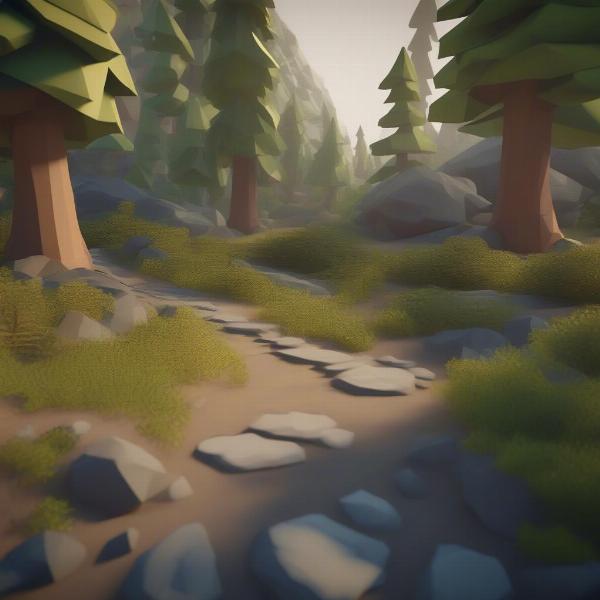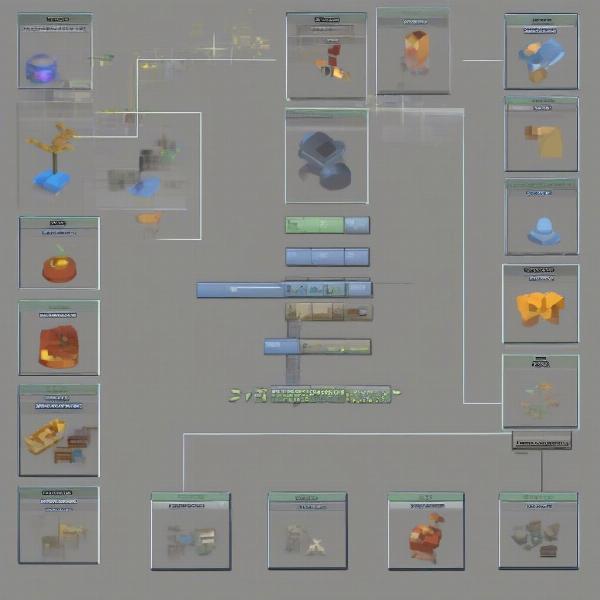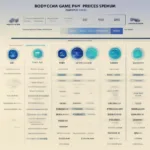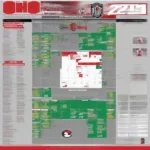Blender, a free and open-source 3D creation suite, isn’t just for modeling and animation. It’s also a surprisingly powerful game engine, allowing you to bring your interactive ideas to life. Creating a game in Blender might seem daunting, but with the right approach, it’s entirely achievable. This guide will walk you through the process, from initial concept to playable prototype.
After setting up your project in Blender, one of the first steps is to familiarize yourself with the interface and its various editors. The 3D viewport is where you’ll build your game world, while the logic editor allows you to program interactions and behaviors. Don’t feel overwhelmed! Blender’s flexibility makes it suitable for beginners and experienced developers alike. For those new to game development, consider exploring simpler game mechanics before diving into complex projects. Starting with a basic game can give you a solid foundation. Want to learn more about making your own indie games? Check out this helpful guide: how to make indie games.
Setting the Stage: Game Design Fundamentals
Before you jump into Blender, it’s crucial to have a solid game design document. This outlines your game’s core mechanics, story (if any), target audience, and overall vision. Even a simple game benefits from a well-defined plan. Think about the genre, the player’s objectives, and the challenges they’ll face. This upfront planning will save you time and headaches down the line. It’s like building a house – you need blueprints before laying the foundation. This principle also applies when learning game design. For a comprehensive guide, check out how to learn game design.
Building Your World: 3D Modeling and Level Design
Now comes the fun part: creating your game’s environment. Blender provides a robust set of modeling tools, allowing you to sculpt anything from simple geometric shapes to complex characters and landscapes. Start with basic shapes and gradually add details. Focus on creating visually appealing environments that enhance gameplay. Don’t be afraid to experiment with different lighting and textures to create the right atmosphere.
 Creating a 3D Game Environment in Blender
Creating a 3D Game Environment in Blender
Bringing it to Life: Animation and Rigging
Static objects are only part of the equation. To create a truly engaging experience, you’ll need to add animation. Blender’s animation tools allow you to bring characters to life, create dynamic objects, and add visual effects. Whether it’s a simple walking animation or a complex cutscene, animation adds depth and immersion to your game.
Logic Bricks: Programming Interactions
Blender’s logic editor provides a visual way to program game logic without writing code. Using logic bricks, you can define how objects interact with each other and the player. This system is particularly beginner-friendly, allowing you to create complex behaviors with drag-and-drop functionality.
 Programming Gameplay with Blender's Logic Bricks
Programming Gameplay with Blender's Logic Bricks
Scripting for Advanced Functionality
While logic bricks are great for beginners, scripting opens up a whole new world of possibilities. Using Python, you can create more complex game mechanics, implement AI, and integrate external libraries. Blender’s integrated Python API provides extensive control over every aspect of your game.
Game Engine Tweaks and Optimization
Once you have a playable prototype, it’s time to optimize for performance. Adjusting graphics settings, optimizing meshes, and streamlining your code can significantly improve your game’s frame rate and overall stability. This is particularly important for more complex games. Ever wondered if GameMaker can handle 3D? Find out here: can gamemaker make 3d games.
Testing and Refinement
Thorough testing is crucial for identifying bugs and balancing gameplay. Get feedback from others and iterate on your design based on their input. This iterative process is essential for creating a polished and enjoyable game. Think of it like sculpting – you constantly refine and reshape until you achieve the desired result.
Exploring Advanced Techniques: Physics and Particles
Take your game to the next level with Blender’s physics engine. Add realistic collisions, gravity, and other physical effects to create more immersive gameplay. Experiment with particle systems to create stunning visual effects, such as explosions, fire, and smoke.
Sound Design and Music Integration
Sound design is often overlooked, but it plays a vital role in creating a compelling game experience. Add sound effects to enhance actions, create ambiance, and immerse players in your world. Incorporate music to set the mood and evoke emotion.
 Final Render of a Game Created in Blender
Final Render of a Game Created in Blender
Beyond the Basics: Multiplayer and Networking
While more advanced, Blender even supports multiplayer networking. This allows you to create games where players can interact with each other in real time. This adds a whole new dimension to your game design possibilities. For those interested in breaking into the games industry, this resource might be helpful: how to get into video game development.
Conclusion
Creating a game in Blender is a rewarding journey that combines creativity and technical skills. From designing your game world to scripting complex interactions, Blender provides the tools you need to bring your vision to life. Remember, learning How To Create A Game In Blender takes time and practice. Start with simple projects, experiment, and don’t be afraid to make mistakes. With dedication and persistence, you can create amazing games entirely within Blender. Are you ready to embark on your game development adventure? Share your creations and connect with other Blender game developers! Ever wondered how to replicate the success of a popular game like Doors? This guide might help: how to make a game like doors.
FAQ
- What are the system requirements for creating games in Blender?
- Can I create mobile games using Blender?
- Are there any limitations to the types of games I can create in Blender?
- What resources are available for learning Blender game development?
- How can I share my finished Blender game with others?
- Is it possible to monetize games created in Blender?
- What are some common mistakes to avoid when creating a game in Blender?

